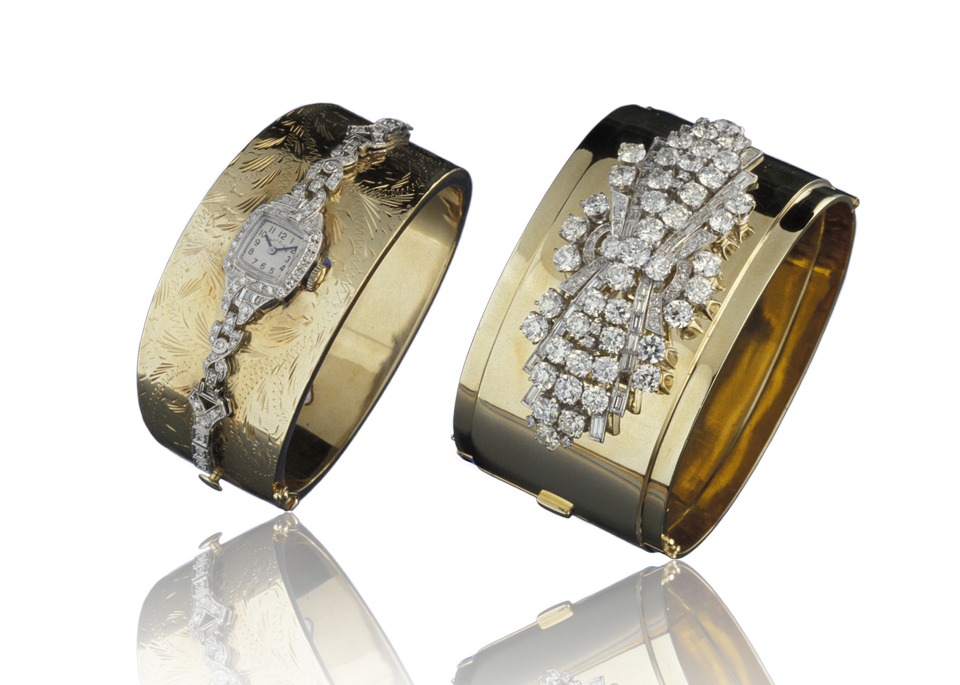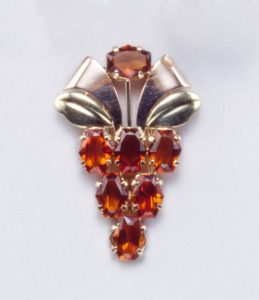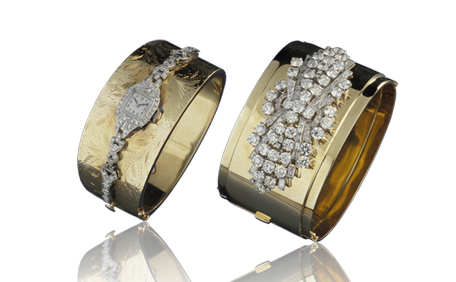If you have heirloom jewelry pieces hidden away in dresser drawers, bank vaults, and jewelry boxes, it’s time to take them out and give them another look.
Heirloom jewelry has sentimental value, something a loved one may have worn. Whether it is a one-of-a-kind piece that’s handmade or a mass produced item, it represents an emotional attachment to the original owner.
Sometimes heirloom jewelry may be viewed like a faded painting by a grand master – a precious object to be restored to its original condition.
Other estate pieces are crying to be reborn as new jewelry. This may not be appropriate if the piece is a special family heirloom, but there are times when jewelry could be reimagined. The passing of time, dated fashions, and serious damage that may have left a piece beyond repair are a few reasons for disassembling heirloom jewelry and turning it into something new.
Jewelry is meant to be worn, so reinventing an heirloom into a piece of new jewelry that reflects your taste makes it more likely that you’ll wear it, and is a great way to keep the memories of loved ones alive.
A note of caution before you begin reinventing your jewelry: If you don’t know the historical or monetary value of your heirloom jewelry piece, take it to a jeweler or jewelry appraiser before altering it in any way. He or she can help you decide whether your piece is worth preserving or is a good candidate for turning it into something new.
Here are a few tips and ideas to help breathe new life into an older piece of jewelry:
1. Wear it in a new way. Wrap a chunky necklace around your wrist and it becomes a bracelet. Consider using a brooch as a hair ornament or pendant. Pierced or clip earrings, either singly or in pairs, can be attached to a jacket as a decorative accent. Rethinking how the jewelry piece is worn is probably the easiest heirloom reinvention there is.
2. Reimagine an old piece. A little imagination can work creative miracles with heirloom pieces that are too small, fragile, or damaged to be worn. A dainty diamond watch, now likely too small for the wrist, was attached to the gold cuff on the left. A vintage diamond brooch became a showpiece again in the gold cuff on the right.

The vintage diamond watch on the left looks chic on an engraved yellow gold cuff bracelet. The diamond brooch on the right was given new life on this gold cuff making it look edgy and artisanal. Photo © GIA & Tino Hammid.
3. Turn a larger piece of jewelry into several smaller ones. The gems in a statement necklace can become earrings. Diamonds in a large cocktail ring or brooch could be used to make a pendant with matching earrings. And so on.
4. Change the metal. A colorless diamond set in platinum or white gold band will make the diamond appear whiter and give the piece a contemporary feel.

While we love these antique Victorian rings just as they are, they may not suit everyone’s tastes. Remounting the diamond on the left into white metal such as white gold or platinum could make for a very trendy ring. The color combination in the ring on the right might seem dated, but the ruby could glow again by setting it a yellow gold ring. Photo by Kevin Schumacher/GIA, courtesy of Lowther Antiques, London, England.
5. Repurpose the gemstones in a new piece. If the jewelry is damaged or if its original setting is not worth saving, you might consider removing the gems and mounting them in a new piece of your own design. You can create a piece of jewelry that will become an heirloom for future generations that still has ties to the past. You can also divide the gemstones among siblings and other loved ones, so everyone can share the memories, and create their own heirlooms.

Here’s another piece we love – a late Victorian gold, platinum, diamond, ruby, sapphire and emerald frog on lily-pad brooch (circa 1880). But if it doesn’t suit your style, you’d have diamonds weighing approximately 12 cts for a new creation. Photo by David Behl, © Janet Mavec & GIA.
If you decide to remove the gems from a piece, consider sending them to an independent laboratory like GIA for examination, before having them reset. A diamond grading report, or gemological report for colored stones, will document what the stone is, whether it is natural or synthetic and if there are any detectable treatments. This information is key for the appraiser to determine the stones’ value for appraisal and insurance purposes; In addition, knowing how the gems were treated will help your jeweler determine the best way to handle the stones during setting, repair and cleaning.
6. Make it fresh and wearable again. Sometimes all a piece of heirloom jewelry needs is a “tune up”. Take your vintage or antique treasure to a jeweler to make sure no gemstones are loose and to give it a proper cleaning. The piece may have a patina (oxidized film) that you may or may not want removed.

A jeweler should make sure the prongs are still holding the gems securely in this brooch. Since it’s an open-backed brooch, it may have accumulated residue from hairspray, perfume, lotion, and skin oil. A professional cleaning and polishing can help restore the original beauty of this piece. Photo by David Behl, © Janet Mavec & GIA.
Even if you don’t own any heirloom jewelry, you can always acquire a piece that was preowned. Just follow our tips for purchasing estate jewelry. These treasures can be restored or reimagined to create your own piece of history and become a memento to pass on to loved ones.
Have you reinvented a piece of heirloom jewelry before? We’d love to hear how you did it, or better yet, post a picture!
Custom Field: Array


